One thing about me: I love bagels. I was never a big sandwich or bread person (unless it was peanut butter and jelly), but a bagel? I’ll never turn one down. At one point, I used to drive out of my way to a place called Once Upon a Bagel, buy two dozen, freeze them, and eat one every single morning. There isn’t a bagel I won’t eat—cinnamon raisin? Love it. Blueberry? Absolutely.
But everything changed when I went to Montreal and discovered the Montreal-style bagel. I love it just as much as the classic New York version. It made me wonder—why does the Montreal-style feel lighter and sweeter than a New York bagel? And what exactly is a St. Louis bagel?
Whether you’re a chewy-core loyalist or a sesame-sprinkled traditionalist, there’s real science baked into every bite. Today, we’re breaking down the fermentation, flour chemistry, and cooking methods that give each regional bagel its unique personality.
🔬 At the Core: Bagel Science 101
To understand bagels, let’s first break down the baseline dough structure shared by most varieties:
High-protein flour (usually bread flour): Essential for forming gluten, a protein network that traps gases and gives bagels their chewy structure.
Yeast: Produces carbon dioxide through fermentation, leavening the dough and developing flavor.
Boiling: This pre-bake step gelatinizes starches on the surface, setting the crust and creating that iconic bagel chew.
boiling causes amylopectin to leach out from the starch granules, which then forms a glossy, semi-permeable skin that traps moisture and enhances chew.
🗽 New York–Style Bagels: The Gold Standard
Boiled in: Salted water, often with added barley malt syrup
Texture: Chewy, dense crumb with a glossy, thick crust
Size: Larger, puffier
Sweetener: Barley malt (contributes Maillard browning and a rich, malty aroma)
New York bagels use long, cold fermentation (often overnight) which:
Enhances organic acid and ester production, leading to a deeper flavor
Promotes gluten development, resulting in more elasticity and chew (ScienceDirect: “Effect of fermentation time on dough rheology and flavor development,” Food Chemistry, 2017)
The Maillard reaction, triggered during baking at high temperatures, is amplified by the barley malt syrup, which increases available reducing sugars for browning and flavor complexity.
🍁 Montreal–Style Bagels: Sweet & Smoky
Boiled in: Water sweetened with honey
Texture: Thinner, denser, slightly drier interior
Baked in: Wood-fired ovens
Sweetener: Honey or malt
Montreal bagels skip the cold fermentation and go for a shorter, warmer proof, which:
Yields less lactic acid and fewer volatile fermentation byproducts
Results in a sweeter, simpler flavor and tighter crumb
They are also:
Hand-rolled and smaller, meaning less surface area for expansion
Baked at high, dry heat in a wood oven, which accelerates crust formation and creates deeper caramelization
McGill University food science researchers note that the “high thermal conductivity of wood-fired ovens results in faster crust setting and interior water loss” (McGill Food Chem. Dept, 2019).
🥯 Wait… St. Louis Style?
Yes, there’s a third contender, albeit controversial.
Not a different dough, but a different serving method
Sliced vertically into thin strips, known locally as “bread-sliced bagels”
So while the flour matrix, hydration ratio, and yeast fermentation may mimic a New York–style dough, the texture perception changes dramatically when sliced this way:
Increases surface area, impacting crust-to-crumb ratio
Reduces chew perception, giving a softer bite
Washington University food behavior studies found that sliced bagels “change user perception of portion size and texture” (WashU Behavioral Nutrition Lab, 2022).
🔍 Why Does This Matter?
Understanding the science of structure and flavor helps us appreciate how much technique affects outcome:
🧬 Gluten development shapes chew
🔥 Boiling and baking conditions influence crust and caramelization
🧂 Fermentation time directly controls acidity and aroma
Whether you’re kneading your own dough or debating the best bagel shop in town, you’re now equipped to slice through the fluff—literally and scientifically.
👩🔬 Want More?
Want to learn more? Have a questions? Reply and let me know—I always love talking about the science behind baking.
Stay Sweet,
Sarah @HalfBatchBaking



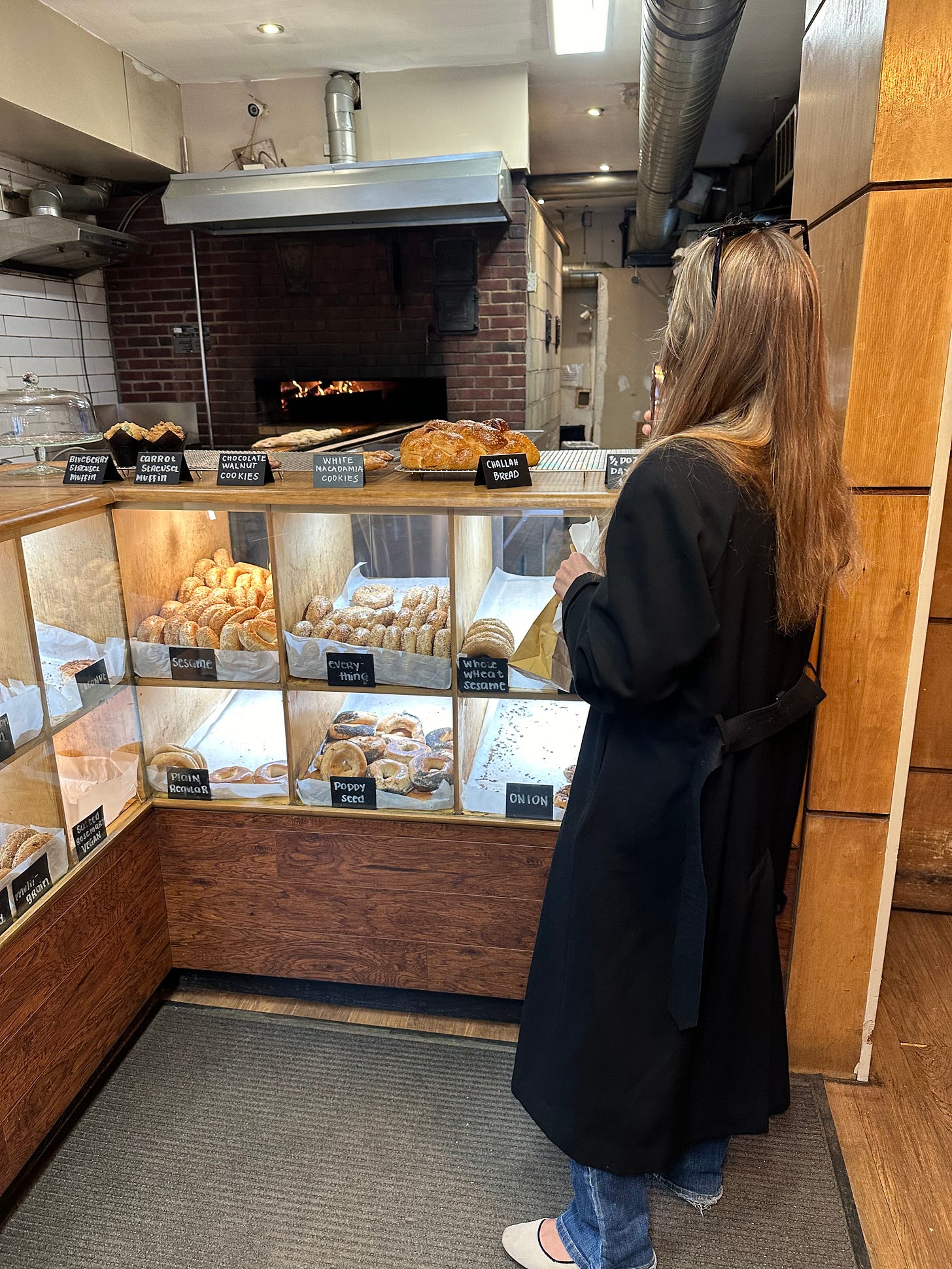
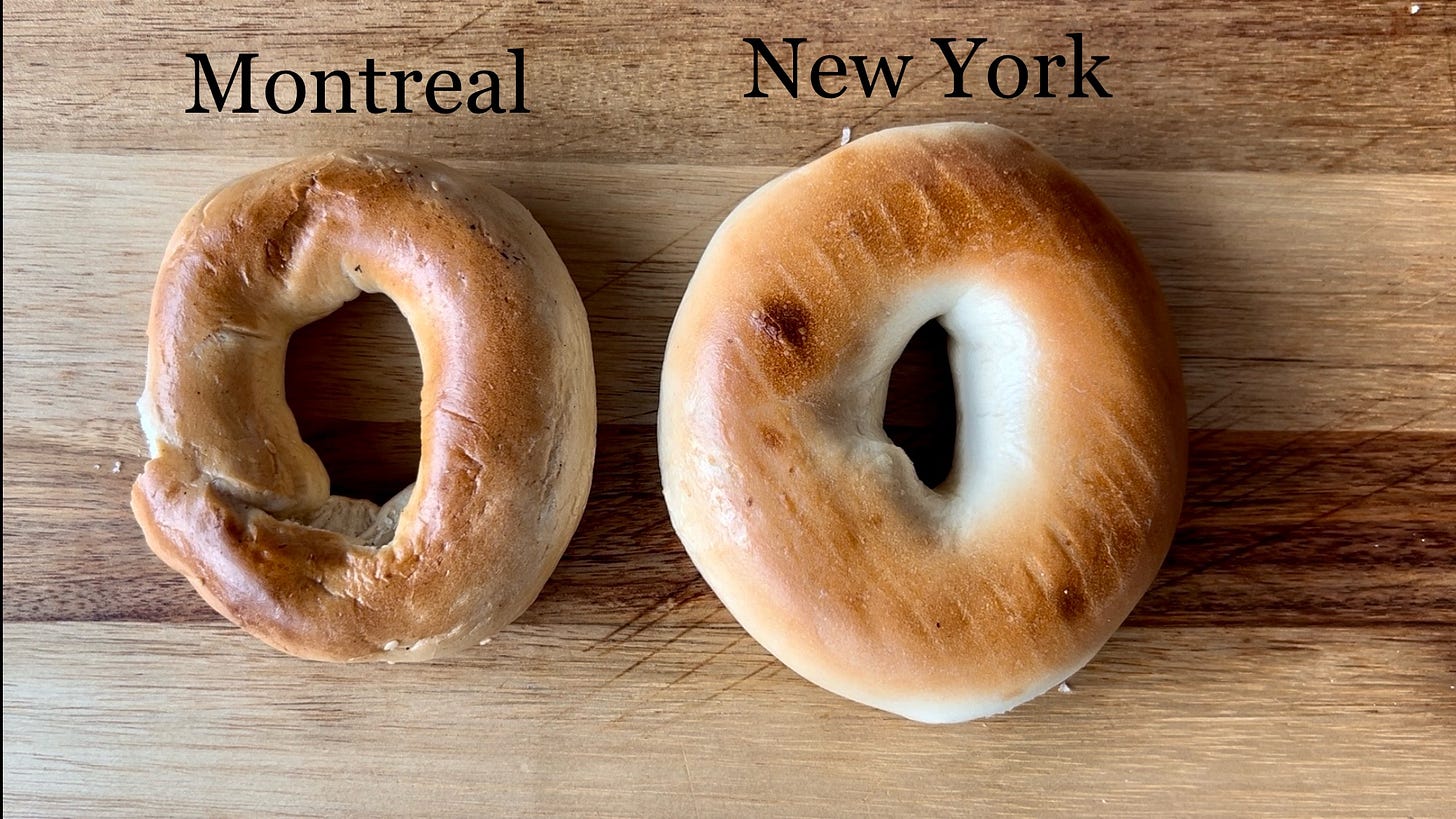
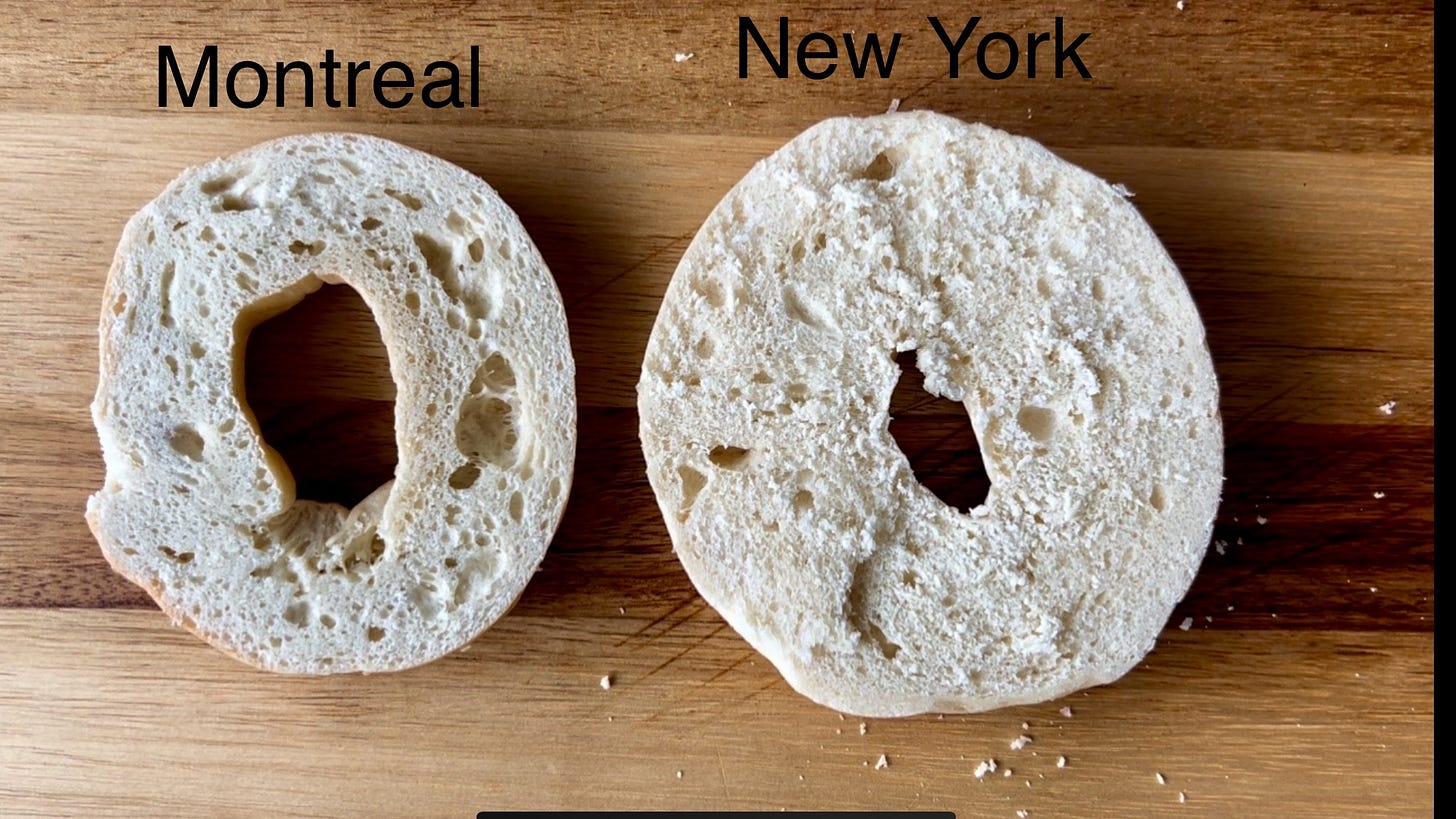
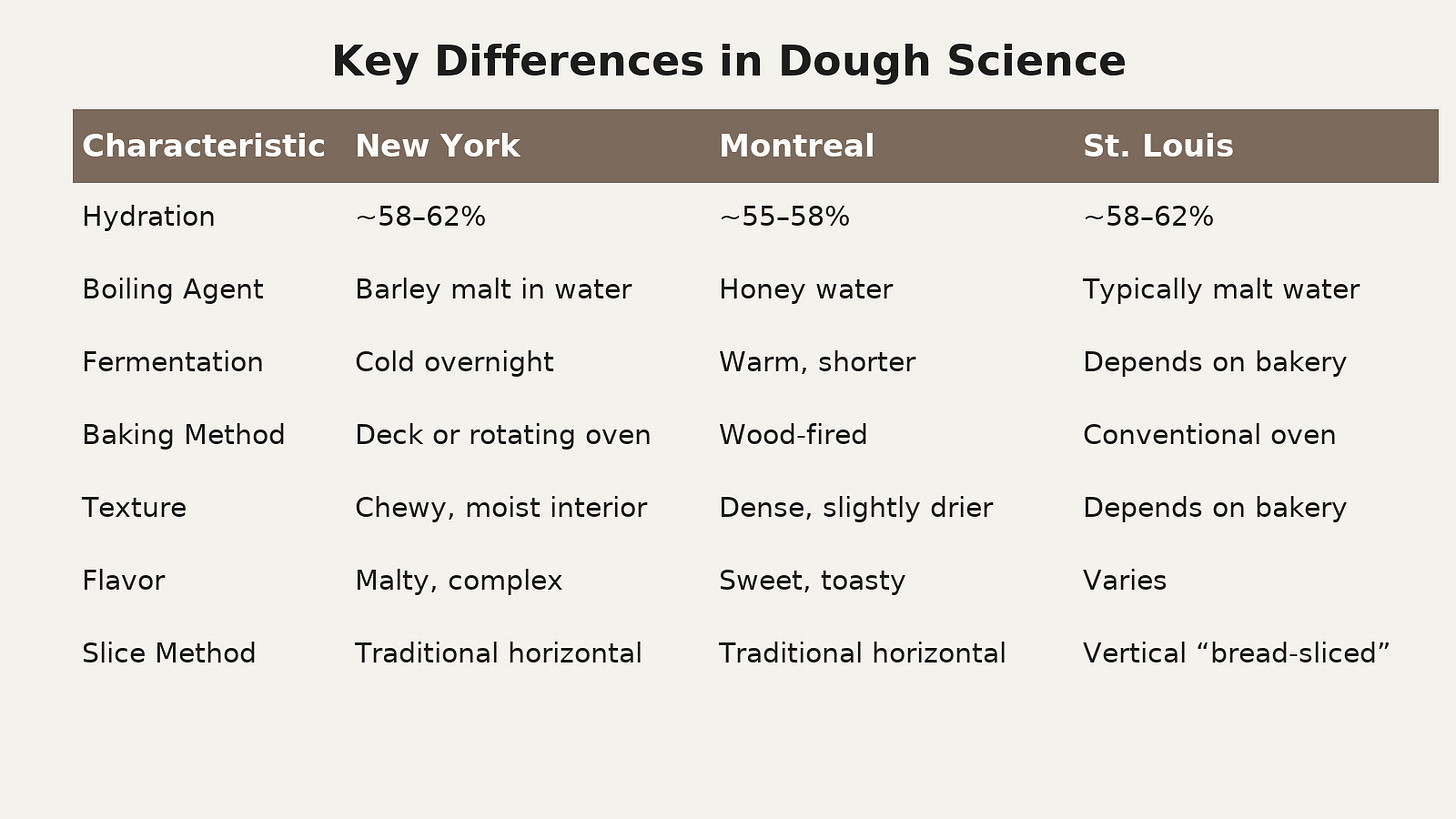
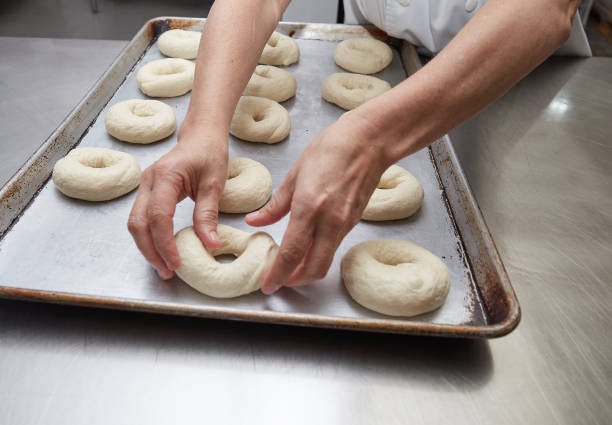
I absolutely love reading your articles. So much information!